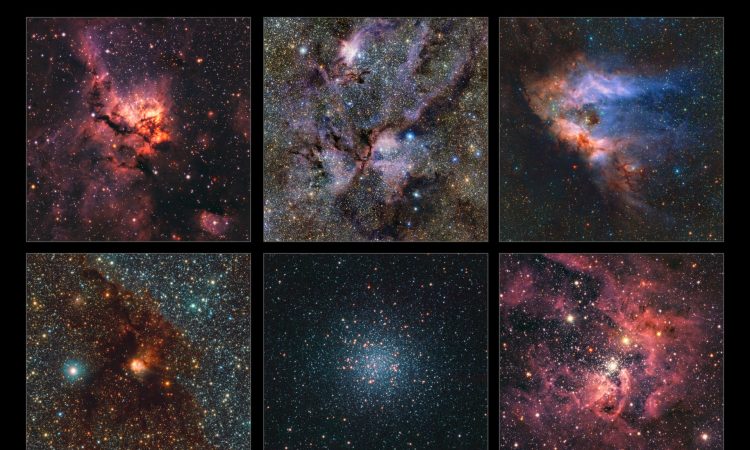
Astronomers have released a giant infrared map of the Milky Way containing more than 1.5 billion objects, the most detailed ever made.
Using the European Southern Observatory’s (ESO) VISTA telescope, the team monitored the central regions of our galaxy for more than 13 years. With a volume of 500 terabits of data, this is the largest observational project.
“We have made so many discoveries that we have definitely changed the view of our galaxy,” says Dante Minniti, an astrophysicist at Universidad Andrés Bello (Chile), who led the project.
This impressive includes 200,000 images captured by VISTA, the telescope for astronomical observation in visible and infrared light. Located at ESO’s Paranal Observatory in Chile, the telescope’s main purpose is to map large areas of the sky. The team used the telescope’s infrared camera, VIRCAM, capable of cutting through the dust and gas that dominates our galaxy, providing a unique window into the Milky Way’s most hidden places.
What does the most detailed infrared map of the Milky Way contain?
This huge data set covers an area of the sky equivalent to 8,600 full moons and contains about 10 times more objects than a previous map published by the same team in 2012. The set includes newborn stars, often hidden in dust cocoons, and globular clusters, that is, dense clusters of millions of the oldest stars in the Milky Way. Infrared observations also allow the VISTA telescope to detect very cool objects that emit radiation at these wavelengths, such as gray dwarfs (“failed” stars that do not support nuclear fusion) or rogue planets that do not orbit a star.
Observations began in 2010 and ended in the first half of 2023, spanning a total of 420 nights. By repeatedly observing each region of the sky, the team was able to not only determine the positions of these objects, but also track their movements and changes in brightness.
Variable brightness probes that can be used as “cosmic rulers” to measure distances. This gave us a precise 3D picture of the inner regions of the Milky Way, previously hidden in dust. The researchers also looked for supervelocity stars, which are stars ejected from the central region of our galaxy after a close encounter with the supermassive black hole there.
A project that led to the creation of hundreds of scientific works
The new map contains data collected by the VISTA Variables in the Vía Láctea (VVV) survey and its partner project, VVV eXtended (VVVX). “The project was a monumental effort, made possible by the extraordinary team around us,” says Roberto Saito, an astrophysicist at the Universidade Federal de Santa Catarina (Brazil) and lead author of the study published in the journal , marking the completion of the project.
The VVV and VVVX surveys have already led to the publication of more than 300 scientific articles. With the completion of these surveys, scientific exploration of the collected data will continue for decades to come. Meanwhile, ESO’s Paranal Observatory is preparing for the future: VISTA will be equipped with its new instrument, 4MOST, and ESO’s Very Large Telescope (VLT) will receive the MOONS instrument. Together, they will provide analyzed, promising endless discoveries.

